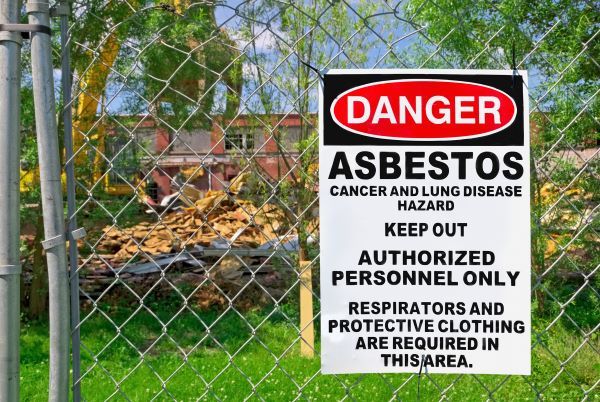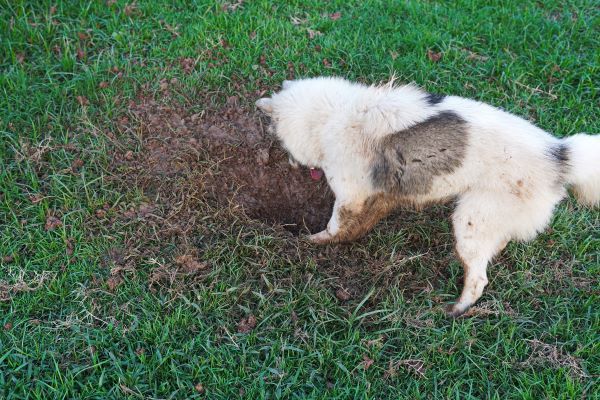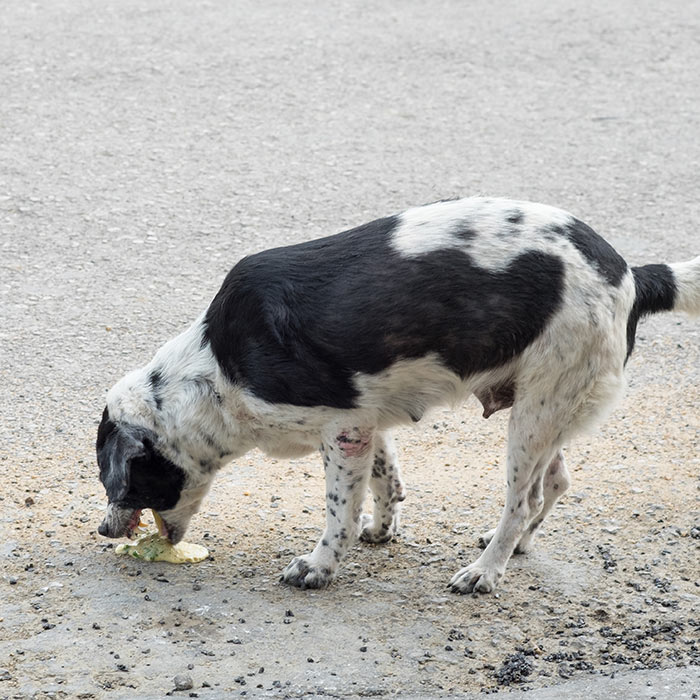Asbestos and pets – what you need to know

What is asbestos?
Asbestos is a name for several minerals that for most of the 20th century were commonly used for many commercial applications, including the manufacturing of building materials and insulation. Most homes built prior to the 1980’s had some asbestos product or material in them, often in attics, ceilings, floor tiles, roofs, ducts and older electrical wiring.
Why is asbestos dangerous for our pets (and ourselves)?
In much the same way that we keep our pets away from chocolate, pesticides and other toxic substances we need to keep our pets away from asbestos.
Even though it is no longer used to manufacture new materials and products in Australia, asbestos is still present in many older building structures. When these materials are disturbed, tiny asbestos fibres fill the air and can easily be inhaled.
Once inhaled, these fibres then attach themselves to the mesothelial lining in the lungs and potentially throughout the body.
What is mesothelioma?
Mesothelioma is an aggressive and deadly type of cancer.
When asbestos fibres become embedded in the body, they cause inflammation and instigate an immune response, setting off a chain reaction that leads to the growth of unnatural and potentially malignant cell mutations. When these mutations become cancerous, it is known as mesothelioma.
Mesothelioma is not unique to humans; although rare, cats and dogs can also develop this cancer. Whilst human mesothelioma is well associated with exposure to airborne asbestos fibres, the link in dogs and cats has not been as well researched and is less understood.
There are a few small studies noting a link between asbestos fibres found within lung tissue in dogs and mesothelioma, however asbestos exposure in dogs appears to be less of a concern to researchers when compared to humans. This may be at least in part due to their short life spans compared to humans.
Nevertheless, keeping your pet away from asbestos is considered the number one way to prevent mesothelioma.
How are pets most commonly exposed to asbestos?
Exposure in dogs and cats is most likely to occur to occur in the following circumstances:
- Home renovations or DIY projects of older houses or buildings
- Secondhand exposure when owners bring asbestos home on their clothes or skin
- Climbing or tunnelling into hard to reach places like attics and ceiling cavities
- Spending time outdoors near construction sites or parks where asbetos has been found or is being removed
- Eating, digging or playing in mulch or soil that contains asbestos

Which pets are most at risk?
- Pets with owners in an asbestos-related field are most likely to be diagnosed with mesothelioma.
- Dogs are more likely to be affected than cats.
- Irish Setters, Bouvier des Flandres and German Shepherds are most likely to develop canine mesothelioma.
- Older dogs are affected most often because of the long latency period of the disease – the average onset of canine mesothelioma is eight years old.
What are the symptoms of mesothelioma in pets?
Signs and symptoms of asbestos exposure can appear sooner in animals than humans. Dogs can show signs anywhere from 1 to 10 years after exposure (humans, on the other hand, can show signs from 10 to 40 years after exposure).
The most common symptoms include:
- Respiratory problems, including painful, difficult breathing, abnormally rapid breathing, huffing, wheezing or shortness of breath
- Cough
- Difficulty moving or exercise intolerance
- Abdominal swelling and discomfort
- Fatigue or lethargy
- Muffled heart, lung and abdominal sounds
- Enlarged scrotum
- Vomiting
Why is asbestos currently in the news?
What has become known as the Sydney asbestos mulch crisis began in early January when asbestos was found in a park in Rozelle. Since then, more sites have been confirmed to have asbestos including transport infrastructure projects, primary and secondary schools, supermarkets and hospitals. Asbestos-contaminated mulch has potentially been used at hundreds of locations across Sydney, including many parks frequented by dogs and their owners.
Fortunately, most of the asbestos samples found so far has been bonded asbestos, meaning it is less immediately dangerous because it is mixed with a harder substance such as concrete, and the toxic fibres are less likely to become airborne. However, three sites have been found to contain the more dangerous, friable asbestos, which has a higher risk of airborne fibres being released when it is handled.
Sydney parks where asbestos-contaminated mulch has been confirmed by the NSW Environment Protection Authority
- Belmore Park, Haymarket
- Bicentennial Park, Glebe (friable asbestos detected)
- Giba Park, Pyrmont
- Harmony Park,Surry Hills (friable asbestos detected)
- Jubilee Park, Glebe
- Munn Reserve, Millers Point
- North Rosebery Park, Rosebery
- Observatory Hill Park, Millers Point
- Regatta Park, Emu Plains
- Robyn Kemmis Reserve, Glebe
- Rozelle parklands (17 locations in and around the park)
- Transport for NSW park, Wiley Park
- Victoria Park, Camperdown
- Wentworth Park, Ultimo
- Wood Street Lands, Forest Lodge
If you and your dog frequent any of the above parks, you may rightly be concerned. Dogs tend to dig in soil and to lick things, which means they may ingest asbestos fibres as well as breathe them in. For your own peace of mind, speak to a vet.
Avoid taped or fenced off areas in the above parks, or avoid them altogether, and be aware that other parks are still being tested and/or have may not yet have been identified as contaminated.
See here for updated information (you can also find out which parks in the City of Sydney have been identified as asbestos-free).
Unsure how serious it is?
Bow Wow Meow policyholders can get access to trusted vet care anytime, anywhere, at no additional cost. Connect to an experienced Australian registered vet via video call, 24/7. Whether it’s providing vet advice, setting up at-home treatment plans, or confirming if you need to visit a vet in person, you can get help when you need it.
Find out more about our pet insurance cover options.
How to prevent asbestos exposure in pets
Asbestos fibres need to become airborne to pose a risk and it is therefore important to prevent the disturbance of asbestos to reduce the risk of exposure to people and pets.
Remove your dog from the home if there is a risk of asbestos exposure during home improvements or renovations (dogs may lick things on which asbestos dust has settled).
Keep your dog away from building sites, abandoned buildings, discarded building materials, and anywhere there has been a known asbestos exposure (see above list of parks where asbestos has been detected recently).
Keep your dog on the lead when walking if your dog tends to run off to explore or likes to eat soil, mulch or grass.

What should you do if your pet is exposed to asbestos?
Mesothelioma typically results after prolonged asbestos exposure, so don’t panic. Fortunately, the health risks of short-term asbestos exposure are generally low. However, any amount of asbestos exposure should be considered dangerous.
Take your pet to the vet, who will perform a thorough physical exam. Alert your vet to any possible asbestos exposures so that they can monitor for signs and symptoms of asbestos illness.
As with humans, chest and abdominal X-rays are the most important tools for diagnosing mesothelioma, and there are other tests that may also be helpful, including blood and urine analysis and biopsy.
Bow Wow Meow Pet Insurance can help protect you and your dog should an unexpected trip to the vet occur.
- Find out more about our dog insurance options
- Get an instant online pet insurance quote




















